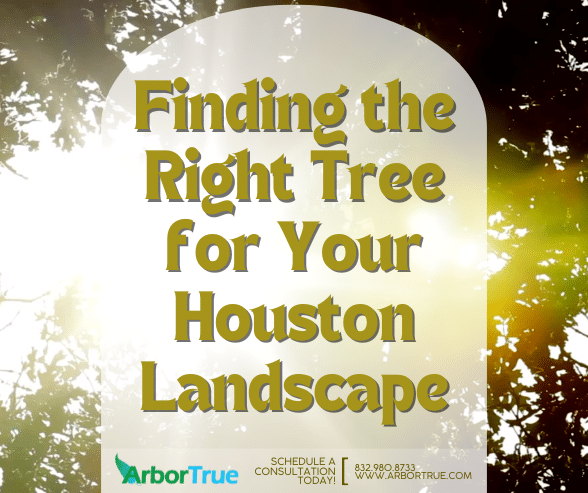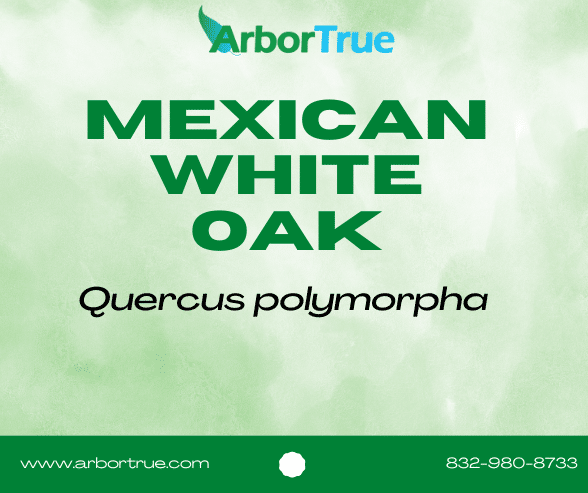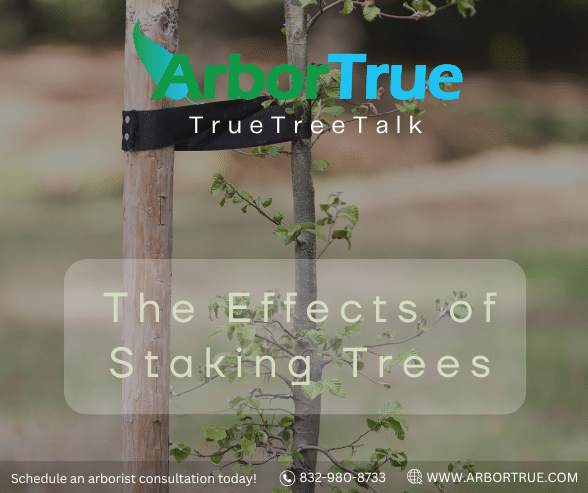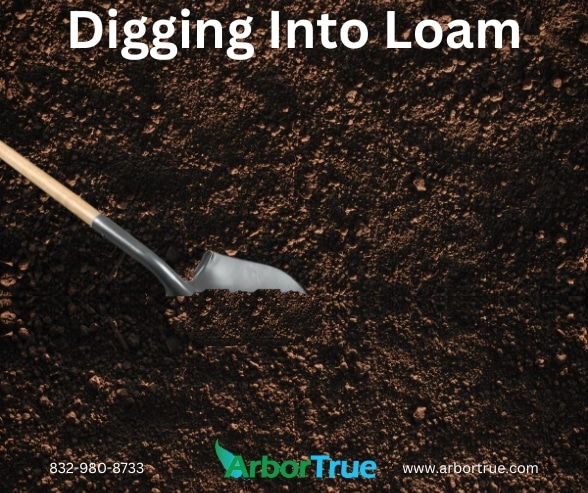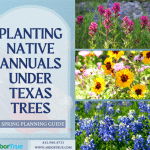
Planting Native Annuals Under Texas Trees: A Spring Planning Guide
January 29, 2025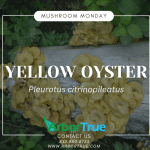
Mushroom Monday: A Tale of Naturalization – The Yellow Oyster Mushroom (Pleurotus citrinopileatus)
February 3, 2025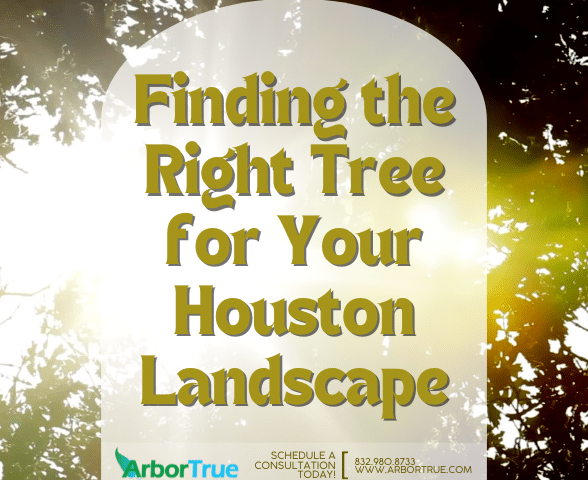
Finding the Right Tree for Your Houston Landscape
Choosing the right tree for your yard can feel overwhelming. Whether you’re looking at an empty corner of your garden thinking “I need something that won’t get too big,” or examining a challenging sunny spot wondering “what tree could possibly thrive here?” – we understand your concerns. We’ve organized trees into four practical categories to help you find options that match your specific situation.
Important Safety Note
Before planting any tree, call 811 to have underground utilities marked. This free service helps prevent accidents and can help ensure your safety. Additionally, consider overhead power lines when selecting your planting location, and maintain safe distances from structures to prevent future issues with roots or branches. While you can plant trees yourself, having a professional plant your tree significantly increases its chances of survival and proper growth. Our arborists can help assess your site and ensure proper planting techniques are used.
Seasonal Note
Winter is an excellent time for tree planting in Houston. The cool temperatures and regular rainfall help trees establish strong root systems before summer heat arrives. Many of our recommended trees are available as container-grown specimens, ready for planting now.
I Have Limited Space
“I want a tree, but my yard is small.” This can be a common situation for many homeowners. A modest yard, a spot near the house, or a corner by the patio – these spaces can all benefit from the right tree. The trees in this category naturally stay smaller or can be maintained at a manageable size. They offer shade, seasonal interest, and beauty without overwhelming their surroundings. Whether you’re looking to add curb appeal to a small front yard or create an intimate garden space, these trees provide options that work with your available space.
Mexican Plum (Prunus mexicana)
This native tree brings the perfect combination of beauty and function to small spaces. Mexican Plum offers multiple seasons of interest while maintaining a manageable size that works well in urban settings and modest yards.
Size and Form:
- Height: 10-35 ft (often much shorter)
- Width: 15-25 ft
- Single-trunked, non-suckering
- Well-proportioned for small spaces
Notable Features:
- Spring: fragrant white/pink flowers
- Summer/Fall: edible fruit changes from yellow to mauve to purple
- Winter: attractive satiny, blue-gray bark with striations
- Multiple seasons of interest
Growing Requirements:
- Sun to part shade
- Low water use once established
- Adaptable to various soil types
- Native to Texas
Special Considerations:
- Not deer resistant
- Excellent choice for small urban gardens
- Provides wildlife value
- Early spring bloomer
Possumhaw Holly (Ilex decidua)
This deciduous holly offers year-round interest with a particular flair for winter drama. When other small trees have lost their show, Possumhaw lights up the landscape with bright red berries against smooth gray branches.
Size and Form:
- Height: 15-25 ft
- Width: 10-15 ft
- Multi-trunked or single stem
- Upright, vase-shaped form
Notable Features:
- Spring: small white flowers
- Summer: dark green foliage
- Fall: yellow fall color
- Winter: bright red berries on bare branches (female plants)
Growing Requirements:
- Sun to part shade
- Medium water use
- Adaptable to most soils
- Native to Texas
Special Considerations:
- Male and female plants needed for berries
- Excellent winter interest
- High wildlife value
- Tolerates urban conditions
- Can be trained as small tree or large shrub
Japanese Maple (Acer palmatum)
This versatile tree adds an elegant, artistic touch to small garden spaces. Japanese Maple brings fine texture and dramatic color changes throughout the seasons, making it perfect for creating focal points in intimate settings.
Size and Form:
- Height: 15-25 ft
- Width: 10-25 ft
- Dense, rounded crown
- Can be single or multi-stemmed
Notable Features:
- Spring: delicate new leaves emerge
- Summer: fine-textured foliage
- Fall: brilliant red to purple colors
- Winter: interesting branch structure
Growing Requirements:
- Dappled sunlight or morning sun
- Regular water until established
- Well-drained, organic-rich soil
- Protection from harsh afternoon sun
Special Considerations:
- Sensitive to drought and extreme heat
- Needs protection from strong winds
- Excellent for patios and entry areas
- Works well in Asian-inspired gardens
- Mildly resistant to deer
Parsley Hawthorn (Crataegus marshallii)
This native small tree combines finely-cut foliage reminiscent of parsley with showy spring flowers and fall fruit, making it an excellent choice for smaller landscapes in the Houston area.
Size and Form:
- Height: 20-25 ft
- Width: 15 ft
- Can be single or multi-trunked
- Broad, open form
Notable Features:
- Spring: dainty white flowers with red anthers
- Summer: finely dissected, parsley-like leaves
- Fall: small red fruit and orange to burgundy foliage
- Winter: attractive bark and branch structure
Growing Requirements:
- Full sun to partial shade
- Medium water use
- Adaptable to clay or sandy loams
- Tolerates occasional flooding
Special Considerations:
- Thorns present (consider placement)
- Excellent for wildlife gardens
- Works well near water features
- Good nesting habitat for birds
- Heat tolerant
Texas Persimmon (Diospyros texana)
This slow-growing native tree brings a touch of the Hill Country to small urban spaces. Texas Persimmon features attractive bark, glossy foliage, and produces small edible fruit, making it an excellent choice for drought-tolerant landscapes.
Size and Form:
- Height: 15-25 ft
- Width: 15-20 ft
- Multi-trunked or single stem
- Rounded, spreading crown
Notable Features:
- Spring: small, creamy white flowers
- Summer: glossy, dark green leaves
- Fall: black, edible fruit (female trees)
- Year-round: smooth, light gray peeling bark
Growing Requirements:
- Full sun to part shade
- Low water use once established
- Well-drained, alkaline soils
- Native to Texas
Special Considerations:
- Male and female plants needed for fruit
- Excellent drought tolerance
- Dark fruit can stain sidewalks
- High wildlife value
- Slow growing
Tough Site
“Nothing seems to grow here.” Whether you’re dealing with intense sun, poor soil, or challenging weather conditions, some spots in your yard may seem impossible for growing trees. The trees in this category have shown their resilience in difficult conditions. They can handle various environmental stresses while still providing shade, beauty, and other benefits to your landscape.
Cedar Elm (Ulmus crassifolia)
One of Texas’ most adaptable native trees, Cedar Elm demonstrates remarkable resilience while providing excellent shade and fall color.
Size and Form:
- Height: 50-70 ft
- Width: 40-60 ft
- Rounded crown
- Drooping branches with corky ridges
Notable Features:
- Spring/Summer: small, dark green leaves
- Fall: yellow foliage
- Winter: interesting branch structure
- Year-round: distinctive bark texture
Growing Requirements:
- Sun to part shade
- Medium water use
- Adaptable to most soils including alkaline
- Native to Texas
Special Considerations:
- Tolerates urban conditions
- Handles drought and poor soils
- Small leaves decompose easily
- Provides butterfly habitat
- May cause allergies in some people
Anacua (Ehretia anacua)
This subtropical native combines toughness with beauty, offering fragrant flowers and year-round interest even in difficult growing conditions.
Size and Form:
- Height: 20-50 ft
- Width: 30-40 ft
- Often multi-trunked
- Dense, rounded crown
Notable Features:
- Spring/Summer: fragrant white flowers
- Summer: glossy, dark green leaves
- Fall/Winter: yellow-orange edible fruit
- Year-round: interesting fluted trunk with rough bark
Growing Requirements:
- Sun to part shade
- Low water use once established
- Adaptable to most soils
- Native to Texas
Special Considerations:
- May freeze back in harsh winters
- Excellent drought tolerance
- Provides food for wildlife
- High deer resistance
- Good shade tree for patios
Mexican White Oak (Quercus polymorpha)
This oak species combines the strength typical of oaks with moderate disease resistance, making it a valuable addition to Texas landscapes.
Size and Form:
- Height: up to 80 ft
- Width: up to 60 ft
- Broad spreading canopy
- Strong central leader
Notable Features:
- Spring: new growth with pinkish tint
- Summer: semi-evergreen foliage
- Fall/Winter: maintains leaves in mild winters
- Year-round: attractive bark texture
Growing Requirements:
- Sun to part shade
- Medium water use
- Adaptable to various soils
- Native to Texas
Special Considerations:
- Moderate disease resistance
- Faster growing than most oaks
- Excellent shade tree
- Good alternative to Live Oak
- Strong storm resistance
Live Oak (Quercus virginiana)
This iconic Texas tree combines remarkable durability with a majestic spreading form, making it an excellent choice for sites that need a strong, long-lived shade tree.
Size and Form:
- Height: 40-50 ft
- Width: 60-100 ft
- Broad, spreading canopy
- Strong branching structure
Notable Features:
- Spring: new growth with silvery sheen
- Summer: dense, evergreen foliage
- Fall/Winter: maintains leaves year-round
- Year-round: massive, sculptural branches
Growing Requirements:
- Full sun to light shade
- Medium water use
- Adaptable to most soils
- Native to Texas
Special Considerations:
- Requires ample space for spread
- Some hurricane resistance
- Long-lived specimen tree
- Susceptible to oak wilt
- High wildlife value
Loblolly Pine (Pinus taeda)
As one of the most common native pines in the Houston area, this fast-growing tree provides quick shade and screening while handling various environmental stresses.
Size and Form:
- Height: 60-100 ft
- Width: 25-35 ft
- Straight trunk
- Pyramidal to rounded crown
Notable Features:
- Spring: new growth “candles”
- Summer: dark green needles
- Fall/Winter: distinctive pine cones
- Year-round: attractive reddish-brown bark
Growing Requirements:
- Full sun
- Medium water use
- Tolerates poor soils
- Native to Texas
Special Considerations:
- Fast growth rate
- Good for screening
- Handles wet sites
- Provides wildlife habitat
- May need pine bark beetle monitoring
Low Maintenance
“I want a tree that’s easy to care for.” Life keeps us busy, and while all trees need some care, some require less attention than others. The trees in this category need minimal pruning, resist common pests and diseases, and adapt well to local conditions. They can thrive with basic care while providing shade, seasonal interest, and natural beauty to your landscape.
American Holly (Ilex opaca)
This evergreen tree combines glossy foliage with bright winter berries, creating lasting interest while demanding little attention from the homeowner.
Size and Form:
- Height: 40-60 ft
- Width: 10-20 ft
- Pyramidal to conical shape
- Dense branching to ground
Notable Features:
- Spring: small white flowers
- Summer: dark green, spiny leaves
- Fall/Winter: bright red berries (female plants)
- Year-round: evergreen foliage
Growing Requirements:
- Sun to partial shade
- Medium water use
- Well-drained, acidic soil
- Native to eastern U.S.
Special Considerations:
- Male and female plants needed for berries
- High wildlife value
- Deer resistant
- Good for screening
- High fire resistance needed for defensible space
Wax Myrtle (Morella cerifera)
This native evergreen can be grown as either a large shrub or small tree, adapting easily to various conditions while requiring minimal care.
Size and Form:
- Height: 15-25 ft
- Width: 10-20 ft
- Multi-stemmed
- Dense, rounded form
Notable Features:
- Spring: small catkins
- Summer: aromatic, olive-green foliage
- Fall/Winter: blue-gray berries (female plants)
- Year-round: evergreen leaves
Growing Requirements:
- Sun to part shade
- Low to medium water use
- Adaptable to most soils
- Native to Texas
Special Considerations:
- Male and female plants needed for berries
- Natural screen or hedge
- Salt tolerant
- Good for wet areas
- Deer resistant
Pecan (Carya illinoinensis)
Texas’ state tree stands as a low-maintenance giant. Once established, this native tree provides generous shade, wildlife value, and the bonus of edible nuts while requiring minimal routine care.
Size and Form:
- Height: 70-100 ft
- Width: 40-75 ft
- Broad spreading crown
- Strong central leader
Notable Features:
- Spring: compound leaves emerge
- Summer: deep green foliage
- Fall: yellow fall color
- Fall/Winter: edible nuts
Growing Requirements:
- Full sun
- Medium water use
- Deep, well-drained soil
- Native to Texas
Special Considerations:
- Needs ample space
- Deep-rooted system
- May drop nuts and small branches
- Excellent shade tree
- Long-lived specimen
Yaupon Holly (Ilex vomitoria)
One of our most adaptable native evergreens, this low-maintenance tree thrives in various conditions and can be grown as either a small tree or large shrub.
Size and Form:
- Height: 15-25 ft
- Width: 10-15 ft
- Multi-trunked or single stem
- Dense, rounded form
Notable Features:
- Spring: small white flowers
- Summer: dark green, small leaves
- Fall/Winter: bright red berries (female plants)
- Year-round: evergreen foliage
Growing Requirements:
- Sun to deep shade
- Low water use
- Adaptable to most soils
- Native to Texas
Special Considerations:
- Male and female plants needed for berries
- Excellent drought tolerance
- High wildlife value
- Deer resistant
- Good for screening
River Birch (Betula nigra)
This native tree brings elegance to low-lying areas where other trees might struggle. Once established, River Birch offers distinctive peeling bark and graceful form while requiring minimal maintenance.
Size and Form:
- Height: 40-70 ft
- Width: 40-60 ft
- Multi-trunked or single stem
- Pyramidal when young, rounded with age
Notable Features:
- Spring: catkins and new leaves
- Summer: medium green foliage
- Fall: yellow fall color
- Year-round: exfoliating cinnamon-colored bark
Growing Requirements:
- Sun to part shade
- Medium to high water use
- Prefers acidic soil
- Native to eastern U.S.
Special Considerations:
- Excellent for wet areas
- Good choice near ponds
- Fast growing
- May drop small twigs
- Heat tolerant with adequate moisture
Blends with Landscape
“I want a tree that looks natural in my yard.” Creating a landscape that feels established and harmonious can be important to many homeowners. The trees in this category complement existing plantings and natural areas. They work well with other native plants, provide seasonal interest, and help create that settled, mature look many people desire for their property.
American Hornbeam (Carpinus caroliniana)
This understory native, also known as Musclewood, features smooth gray bark with distinctive fluting that resembles muscle tissue, making it appear as though it’s always been part of your landscape.
Size and Form:
- Height: 20-30 ft
- Width: 20-30 ft
- Multi-trunked or single stem
- Rounded, spreading crown
Notable Features:
- Spring: catkins and new leaves
- Summer: dense green foliage
- Fall: orange to red fall color
- Year-round: distinctive muscle-like bark
Growing Requirements:
- Part shade to full shade
- Medium water use
- Rich, well-drained soil
- Native to Texas
Special Considerations:
- Excellent understory tree
- Tolerates heavy shade
- Good for woodland gardens
- Slow growing
- Natural looking structure
Chalk Maple (Acer leucoderme)
This native maple brings the grace of Japanese maples with better heat tolerance, blending beautifully with existing vegetation while providing delicate texture and reliable fall color.
Size and Form:
- Height: 20-30 ft
- Width: 15-25 ft
- Multi-trunked or single stem
- Rounded, spreading crown
Notable Features:
- Spring: delicate new leaves
- Summer: medium green foliage
- Fall: yellow to orange-red color
- Year-round: chalky white bark
Growing Requirements:
- Part shade to full shade
- Medium water use
- Well-drained soil
- Native to southeastern U.S.
Special Considerations:
- Good understory tree
- Works well in woodland gardens
- Heat tolerant for a maple
- Provides dappled shade
- Slow growing
Southern Magnolia (Magnolia grandiflora)
This stately evergreen creates an air of permanence with its glossy foliage and dramatic flowers, helping establish that mature, settled look many homeowners desire.
Size and Form:
- Height: 60-80 ft
- Width: 30-50 ft
- Pyramidal to rounded crown
- Dense branching structure
Notable Features:
- Spring/Summer: large, fragrant white flowers
- Summer: glossy, dark green leaves
- Fall: decorative red seed pods
- Year-round: rusty brown leaf undersides
Growing Requirements:
- Sun to part shade
- Medium water use
- Well-drained, acidic soil
- Native to southeastern U.S.
Special Considerations:
- Drops leaves year-round
- Creates deep shade
- Good for privacy screening
- Needs space for roots
- Surface roots may affect lawn
Sassafras (Sassafras albidum)
This native tree brings unique mitten-shaped leaves and spectacular fall color, creating seamless transitions between cultivated and natural areas.
Size and Form:
- Height: 30-60 ft
- Width: 25-40 ft
- Multi-trunked or single stem
- Rounded, irregular crown
Notable Features:
- Spring: yellow flowers before leaves
- Summer: three distinct leaf shapes
- Fall: outstanding orange to red color
- Winter: blue fruit on female trees
Growing Requirements:
- Sun to part shade
- Medium water use
- Well-drained, acidic soil
- Native to eastern U.S.
Special Considerations:
- Colonizes through root suckers
- Good for naturalized areas
- High wildlife value
- May need sucker control
Conclusion
Choosing the right tree for your landscape doesn’t have to be overwhelming. Whether you’re working with limited space, dealing with challenging conditions, seeking low-maintenance options, or trying to create a natural-looking landscape, there’s a tree that matches your needs. The trees in this guide have shown their ability to thrive in Houston area conditions while providing beauty, shade, and ecological benefits.
Remember that proper planting and early care are crucial for long-term success. Consider factors like:
- Available space both above and below ground
- Proximity to structures and utilities
- Soil conditions in your yard
- Amount of sunlight the location receives
- Your maintenance preferences
While these recommendations serve as a starting point, every yard has unique characteristics. For the best results, consider having your tree professionally planted. Our team has the expertise to:
- Evaluate soil conditions
- Ensure proper planting depth
- Address any root issues before planting
- Provide correct initial watering
- Establish proper mulching
- Create a care plan for your new tree
Professional planting significantly increases your tree’s chances of thriving and reaching its full potential in your landscape. If you’re unsure about which tree would work best in your specific situation, our arborists can evaluate your site, help you make the best choice, and ensure your new tree gets the right start through proper planting techniques.
If you found this information about Finding the Right Tree for Your Houston Landscape helpful, check out our other posts on our TrueTreeTalk blog. Follow us on Facebook to keep up with these and other posts. Check out our list of blog posts grouped by topic for more to read.
* * *
ArborTrue is a science-based tree service company in the greater Houston area. We also serve Austin and other parts of Central Texas. We provide a range of services including tree trimming, tree pruning, tree removal, tree planting, arborist consultations, and more. Call us today at 832-980-8733 (Houston) or at 512-546-3833 (Austin) or reach out to us online to schedule an appointment.

